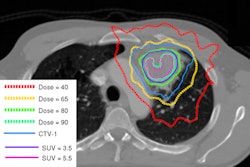What's more important, starting radiation therapy for a patient as scheduled or ensuring treatment accuracy? For a network of New York radiation therapy centers, safety trumps schedule under a quality assurance (QA) program that "grounds" patients from treatment if a mandatory QA process doesn't check out.
The large, multicenter radiation therapy department of North Shore-Long Island Jewish Health System's Cancer Institute has implemented a department-wide "no-fly" policy to compliment its safety quality checklist program. When an item related to planning a patient's radiation therapy treatment program is flagged by a safety quality checklist and requires reconciliation with other items, a holding pattern is initiated. This postpones the launch of radiation therapy until all issues are reconciled.
The no-fly policy has helped mitigate risk-expedited care, in addition to creating a process-driven culture that better matches best practices, Dr. Louis Potters, professor and chairman of the department, told attendees at the recent American Radium Society (ARS) meeting in Palm Beach, FL.
The department of radiation medicine at the Cancer Institute operates four treatment centers throughout Long Island's Nassau County. Nine radiation oncologists and a clinical and administrative staff of more than 100 support the operation of eight linear accelerators and the delivery of 37,000 fractions of external-beam radiation therapy to approximately 2,100 cancer patients each year.
One of Potters' first objectives after joining the department in late 2007 was to implement the conversion to paperless operations. Using an electronic medical record (Mosaiq, Elekta) that was deployed in 2008, it was possible to create electronic checklists and to improve operational efficiencies. Clinical care operations were revised, policies were modified, and staff received additional training on maintaining a strong "safety first" environment.
But in spite of these initiatives, the pressure to start patient treatments on the dates they were originally scheduled undermined the efforts. Important aspects of planning radiation treatments were still frequently performed on a just-in-time basis, Potters explained.
"We determined that despite having tight electronic record processes and a culture of safety, clinical care at times was still rushed," he said. "Important functions were being performed at the last minute, adding to stress and the potential risk of making errors in patient treatment plans."
When medical physicist Ajay Kapur, PhD, joined the department in 2009, he used the existing metadata in Mosaiq to evaluate the department's operations. Kapur and a quality team that included representatives from within the department used Six Sigma process improvement principles to identify persistent outliers. These outliers reflected areas at risk for unsafe treatment based on a failure mode and effects analysis.
"The team mapped out every aspect of care in a treatment program, from the very first step to plan the treatment through completion," Potters said. "The team determined that timeliness of the written directive, proof of consent, intensity-modulated radiotherapy quality assurance, and second check of plans were the major stress points in the process. When any of these were incomplete or left to the last minute to complete, they set off a wave of rushed activity to ensure that patient treatment would begin in time."
"We realized that this was the most vulnerable situation in which errors could be made," he emphasized. "An error in a patient treatment plan can have a huge downstream impact."
The department developed clear, unambiguous "stopping" rules that dealt with critical handoffs of complex information. Staff members were expected to communicate delays to the patient's radiation oncologist, physics planning coordinators, and treatment machine scheduling staff. Treatments were assigned a proactive delay status in the electronic patient record so they could be tracked and analyzed.
In an interview with AuntMinnie.com following his presentation, Potters said that the radiation medicine department made a strategic decision to deal with patients' and referring physicians' dissatisfaction. From a radiobiological perspective, a delay of one or several days before receiving radiation therapy will not affect the patient's clinical outcome in terms of success or failure.
But working with the new system, which was implemented in July 2010, wasn't easy during the first months. It took several months to evolve and be accepted by the staff.
"Our staff prided itself on being on time with treatment start dates," Potters said. "We took away the newsroom-meets-deadline approach of treatment planning. In addition to forcing a change in the culture of the department, we also needed to proactively educate our new patients about the fact that if a start date was delayed for safety reasons, it was better in the long run for the patient."
In a review of 520 cases over an eight-month period, approximately 10% of the appointments were delayed. However, efficiency improved because the staff analyzed what caused the no-fly activations. During the first month, 80 events stopped patient treatment start dates. During the eighth month, only 20 such events occurred.
Ironically, the majority of stopping events were caused by physician delays. These are inevitable given the complexity of cancer care. But Potters said that the most difficult aspect of the no-fly policy implementation was getting radiation oncologists' buy-in to the program.
"We are still learning and evolving," he said. "While we are pleased with the process to date, safety programs need to evolve and change, and we continue to evaluate and modify this program as needed."
Operational changes to improve patient safety can take many forms, Potters noted. But at the Cancer Institute, the no-fly policy has produced improvements in safety that a quality checklist alone could not achieve.



















